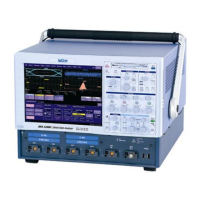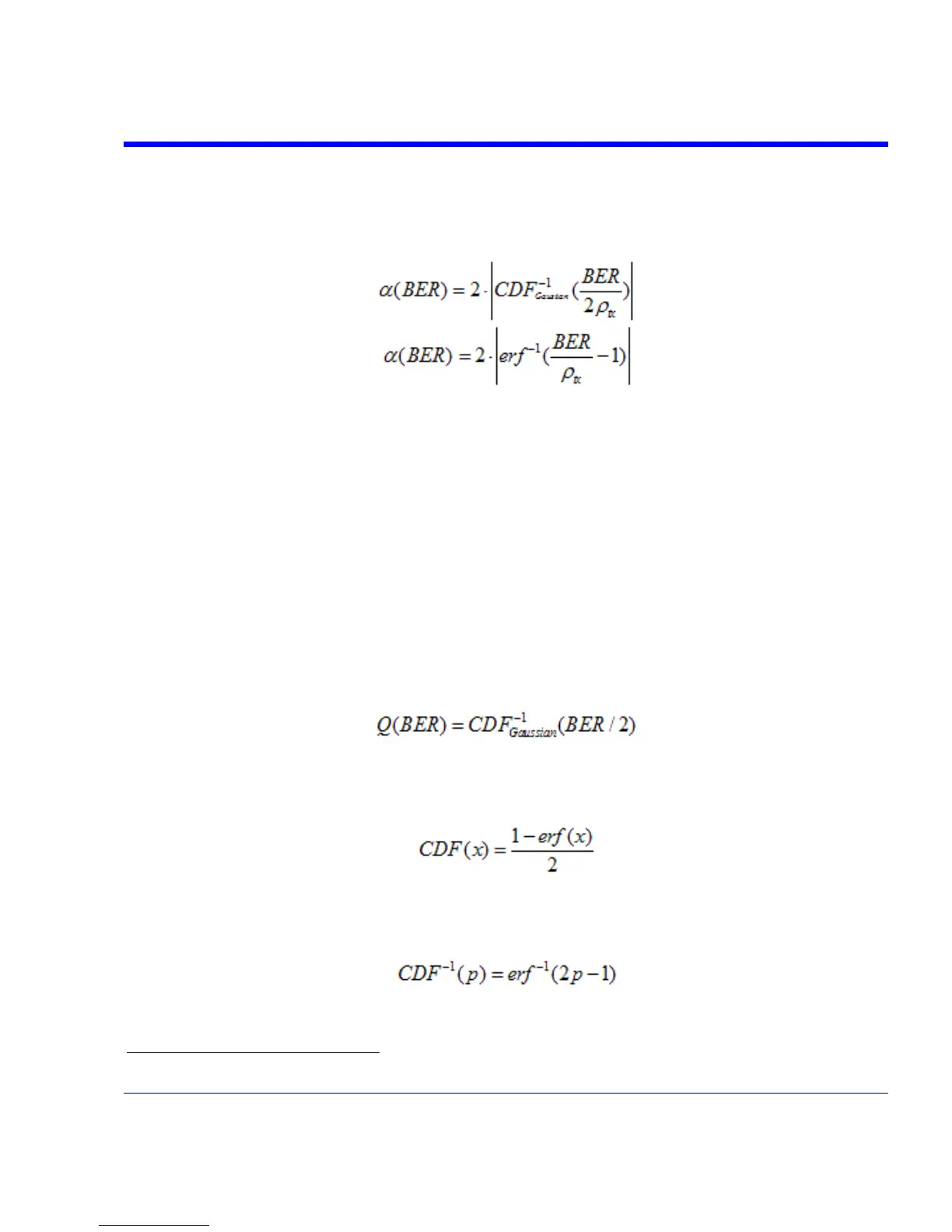SDA Operator’s Manual
Usually when this equation is presented, a qualifying remark might be "and the function α(BE
the number of standard deviations for a Gaussian with sigma of 1, that corresponds to the
specified bit erro
R) is
r ratio (BER)." Now, it turns out that α(BER) is to within a constant factor, exactly
the inverse error function, erf
-1
(1-BER). That is:
Where in both cases we explicitly incorporate the transition density
12
, since the purpose of the
alpha factor is to calculate Tj, and transition density is required for this purpose (since jitter is only
pertinent for bit errors that have transitions).
Application of Error Function to Measured Jitter CDF (on Q-scale)
There is a notion in science of “preferred coordinates.” The notion goes a bit like this: “a physical-
mathematical relationship can be most simply expressed when the coordinates of the problem
are well chosen.” An example is Kepler's Laws. When expressed in the usual Cartesian
coordinate system, those laws are rather obscure; but, expressed in polar coordinates, they are
quite simple.
The problem of analyzing the EDF in order to predict a CDF is best served by a coordinate
transformation for the variable BER.
The subject of Q-Scale has been proposed and described by several sources. The desired
transformation is to a new variable Q obtained from BER as follows:
The Cumulati he
following way
ve Distribution Function, for a normal Gaussian is related to the error function in t
.
The CDF being the function that provides the probability for an event (for a system obeying a
Gaussian probability density function) occurring to the left of the value x. Note also, by inspection:
SDA-OM-E Rev H 391
12
This is the ratio of transitions between bit values to the total number of bits (so upper bounded by 1) but normally about
0.5 for standard test patterns and, in particular, for PRBS patterns. See white paper from LeCroy on this subject.

